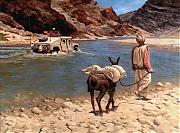By Sgt. Sara Wood, USA
American Forces Press Service
WASHINGTON, Jan. 26, 2006 – The Marine Corps Special Operations Command, the newest addition to the special operations community, will be a complementary force that will ease the strain on other services' elite units and will contribute to the nation's readiness in the global war on terror, the new unit's commander said here today.
"I firmly believe that this is the right thing to do for the country at this time," said Marine Brig. Gen. Dennis J. Hejlik, commander of Marine Corps Special Operations Command. "This irregular warfare is here to stay. If we don't start to go that way, where the force is more joint and more capable across the spectrum, that's not a good thing."
The Marine Corps Special Operations Command, or MARSOC, will formally stand up its headquarters Feb. 24 at Camp Lejeune, N.C. In addition to the headquarters, Camp Lejeune will be home to the Marine Special Operations Support Group, several foreign military training units, a Marine special operations battalion, and the Marine Special Operations School, Hejlik said. Another Marine special operations battalion will be stationed at Camp Pendleton, Calif., he said.
Over the next five years, MARSOC will grow to an end strength of 2,600 people, Hejlik said. This will include 24 foreign military training units that will deploy worldwide in support of U.S. Special Operations Command and the various combatant commanders, he said. MARSOC already has three FMTUs that will deploy in 2006 and 2007, he said.
The Marine special operations battalion will include four Marine special operations companies, each with 97 to 118 people, depending on mission requirements, Hejlik said. The core of these companies will be experienced force reconnaissance Marines taken from the mainstream Marine Corps, he said.
"There's a lot of capability there, because they're a little bit older; they're a little bit more mature," he said.
The Marine special operations companies will deploy with Marine expeditionary units, Hejlik said. Once deployed, the companies will under operational control of the special operations commander in theater, but be available to support the MEU if needed, he said.
"The intent is not just to rip the guts out of the MEU," he said. "We like to say that they're not separate, but separable."
The focus of MARSOC at the beginning will be the foreign military training units and their missions, Hejlik said. These units will complement the work being done by similar units in other special operations forces and will fill gaps that have arisen due to the recent high demand on special operations, he said. The Marine FMTUs will support all five geographic combatant commanders, with the first scheduled to carry out a mission for U.S. European Command, he said.
The first Marine special operations company will not be formed until May 2006 at Camp Lejeune, Hejlik said.
Marines will only spend three to five years in MARSOC and then will be rotated back into the regular Marine Corps, Hejlik said. This rotation will benefit the entire force, because young Marines will be trained to a higher standard in MARSOC and will bring those skills to other units, he said. It will also prevent Marines from becoming stagnant in one unit and give them opportunities for advancement and education, he said.
"If you take a quality Marine and you bring him up to a little higher standard using (special operations forces) standards, and you give him the right equipment, he is unbeatable," he said.







Bookmarks